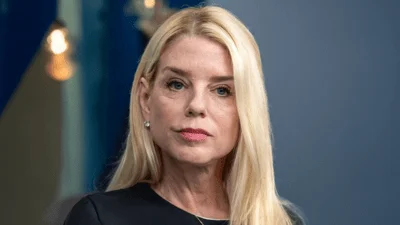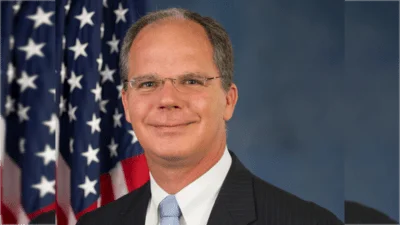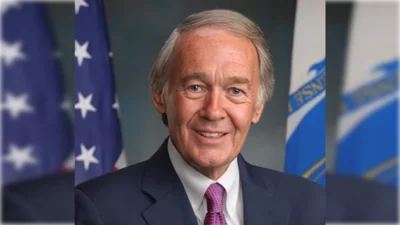Congresswoman Rosa DeLauro (D-CT), Chair of the Labor, Health and Human Services, Education, and Related Agencies Appropriations Subcommittee, delivered the following remarks at the Subcommittee's hearing on reducing child poverty:
Good morning. Welcome to our guests. Today, we are examining child poverty in America: the immense physical toll and financial strain it puts on our young people, our families, and our nation.
The ranking member would love to be here, but is held up at the Rules Committee. So, I ask unanimous consent to enter his remarks into the record.
To frame the impact of poverty on our children, I want to mention the work of Dr. Pamela Cantor, a psychiatrist who specializes in childhood trauma. After 9/11, New York City’s Department of Education asked her organization, the Children’s Mental Health Alliance, to assess the impact of the attack on the city’s public-school children. She found children were traumatized, but much more so by growing up in poverty.
Poverty was a daily attack on their wellbeing. So, it is for millions of children across this country who go to bed hungry, wake up cold, grow up with less, and struggle in communities that provide few chances to succeed, to grow, to make mistakes without destroying lives.
Let us also remember that poverty has a pernicious impact on the development of children. It is a lifelong scar.
This subcommittee provides some of the largest sums of discretionary funds in the Congress for the wellbeing of children, especially those in poverty.
* Early childhood programs from the Child Care and Development Block Grant (CCDBG) to Early Head Start / Head Start, and Preschool Development Grants;
* Education programs like Title I and Title II, Gear Up, TRIO, and the Education for Homeless Children and Youth program;
* And, labor programs that help connecting people to the training skills they need to make ends meet such as WIOA training grants, job corps, and apprenticeships.
In fact, the budget for the Administration for Children and Families in the Department of Health and Human Service is larger than that of the entire budget for either the Department of Justice, the Department of Interior, or the Treasury Department.
So, measures to address child poverty are an apt and fitting topic for us to review.
In fact, this hearing is the next step in the process started by the Appropriations Committee years ago. It was in 2015 that the full committee accepted, by voice vote, an amendment introduced by our colleagues Congresswoman Lucille Roybal-Allard and Barbara Lee to fund a comprehensive, non-partisan National Academy of Sciences (NAS) study of child poverty in the United States. The evidence-based report was to, quote, “provide its assessment of the most effective means for reducing child poverty by half in the next 10 years."
Let me commend Congresswomen Roybal-Allard and Lee for their leadership in this regard.
The results of their leadership and this subcommittee’s investment bore fruit last year when The National Academies of Sciences, Engineering, and Medicine released their report, “A Roadmap to Reducing Child Poverty."
Because we invested in this report from HHS’s Administration for Children and Families (ACF) Social Services and Income Maintenance Research account it is only fitting that we see it through and actually discuss the findings instead of just leaving the report to gather dust on a shelf. Let us put the dollars to work.
The National Academies report is an exhaustive, 600-page document that both quantifies the immense national costs of childhood poverty and outlines various public we can and should be advancing, in particular to halve child poverty in 10 years.
Let me quickly run through some of the takeaways on the scale and the demographics of child poverty in America.
* In 2015, 9.6 million children lived in poverty. That is about the population of the State of Michigan, living in households with inadequate economic resources. 2.1 million were living in deep poverty: households with grossly inadequate resources. That is about the population of New Mexico.
* With regard to race, quote, “The poverty rates for Black (17.8%) and Hispanic (21.7%) children were more than double those of non-Hispanic White (7.9%) children."
The report also notes that child poverty is not an individual problem. NAS estimates that childhood poverty costs the United States between $800 billion to $1.1 trillion annually from increased crime, worsened health, and lower earnings when poor kids become adults.
That is the scale and scope of the problem. Then, the solutions.
As the NAS report states, quote, “Poverty alleviation can promote children’s development, both because of the goods and services that parents can buy for their children and because it may promote a more responsive, less stressful environment in which more positive parent-child interactions can take place."
Study after study has shown-that the first few years are essential to long-term outcomes for kids. But for our children to thrive, we have to support them at this vulnerable time of crucial development.
The report does not identify a silver bullet. Instead, it measures the effectiveness of four different packages of policies.
With regard to ineffectiveness, I will note that the NAS task force - which represents the consensus of the scientific community - found that, quote, “work requirements are at least as likely to increase as to decrease poverty."
Instead, to actually reach the goal of cutting deep poverty in half, we need to employ one of three policies: a universal Child Tax Credit, increases in SNAP, or housing vouchers. Other policies matter, like SSI - Social Security Insurance, but do not get you there.
While these are not in our specific jurisdiction, they are worthy of our attention as appropriators. In particular, the task force said the single policy that would do more than any other to reduce child poverty is a universal is a $2,700 Child Tax Credit, which would single-handedly cut child poverty by a third.
To expand and strengthen the Child Tax Credit, I am proud to have introduced the American Family Act in the House of Representatives with Congresswoman Suzan DelBene of Washington. The American Family Act makes fully refundable the Child Tax Credit and a new Young Child Tax Credit. According to Columbia University’s Center on Poverty and Social Policy, doing so would cut child poverty nearly by 38% and deep child poverty in half.
I would note, one third of children are not eligible for the full Child Tax Credit because their parents earn too little. These families are those that need the most help. Rural families, military families, and larger families.
Let me close so we can turn to our witnesses. I believe today’s hearing is so important because it is vital that we delve into the problems that so many of our programs aim to solve. As we have said, the Labor-H bill makes opportunity real for families so everyone has a better chance at a better life. This report, our report that we secured on a bipartisan basis, identifies how much is left to do. Millions of children remain prisoners of their parents’ poverty. Not all of the policies are in our jurisdiction. But what is in our jurisdiction as the Congress and as the Appropriations Committee is to be advancing policies that can help immensely and immediately.
I am reminded of the words of Bobby Kennedy. He said, quote, “I believe that as long as there is plenty, poverty is evil. Government belongs wherever evil needs an adversary and there are people in distress."
There are people in distress. There are children in distress. There is no time to delay.
Thank you again to our witnesses for being here and for lending your expertise.
Source: U.S. Department of HCA









